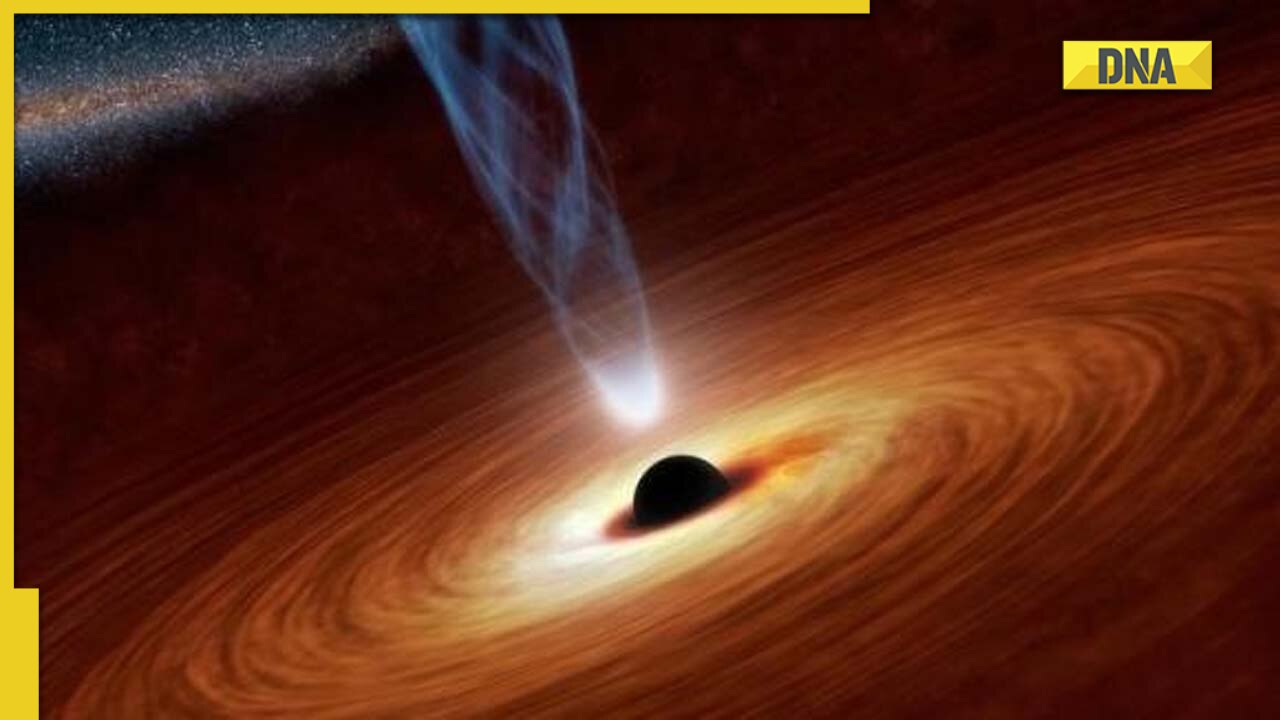
Here's what scientists know about origin of supermassive black holes
- Select a language for the TTS:
- UK English Female
- UK English Male
- US English Female
- US English Male
- Australian Female
- Australian Male
- Language selected: (auto detect) - EN
Play all audios:
Supermassive black holes are found in or near the centre of the galaxy, which have millions and billions of solar masses. Recently, astronomers made the first radio images of the
supermassive black hole Sagittarius A* located at the centre of our Galaxy Milkyway. This is helping scientists to know a lot of new things about the black hole, but the origin of igt still
remains a mystery. Now in a new study, scientists have got the hope of solving the mystery of the origin of black holes from the dwarf galaxy. In this study, they have found ways to survey
the nearby universe, so that they can get information about the development of black holes in dwarf galaxies. Read | How the black hole may have reversed its entire magnetic field HIDDEN
TREASURE IN DWARF GALAXY In a recent study published in The Astrophysical Journal, researchers from the University of North Carolina at Chapel Hill attempted to find an answer to this
question in small black holes located in dwarf galaxies. They found such a galaxy to be a treasure trove of missing links that could explain the growth of supermassive black holes. FROM
SMALL TO LARGE Supermassive black holes are found in or near the centre of the galaxy, which have millions and billions of solar masses. The answer to how they become so huge is found in
hierarchical models. According to this, the formation of planets and galaxies takes place from small to large level. The formation of the Milky Way Galaxy also started with the first gaseous
clouds. HOW THE MILKY WAY BECAME BIG GALAXY 14 billion years ago, the Milky Way was a small galaxy, but gradually the second small galaxy merged with it and this process continues even
today. The nearby Andromeda Galaxy will also merge in the Milky Way after a few billion years. Even now there are about 20 small galaxies roaming near the Milky Way, which will merge in it.
'GROWING BLACK HOLE' CANDIDATES Similarly, scientists think that a dwarf galaxy will have the structure of a growing black hole. Astronomers have discovered candidates for such
growing black holes by conducting a new survey of the nearby universe. In fact, the North Carolina team has discovered many such dwarf galaxies. And their study started with the
investigation of where supermassive black holes came from. GROWTH THROUGH MERGER Scientists believe that the black hole may have grown from the mergers of other black holes, and the
hierarchical pattern indicates the same. The merger of small stellar-mass black holes, especially in a crowded atmosphere containing dwarf galaxies or star clusters, would have caused the
black hole to become massive. HOW WERE THESE GROWING BLACK HOLES DISCOVERED? Such growing black holes are seen in huge bright galaxies. But to know the role of their evolution in dwarf
galaxies, the researchers analysed galaxy data from many observations. They also found a lot of evidence of a growing black hole. Most prominent in this were the powerful emissions coming
from the area around these black holes. The researchers focused on active black holes at the centre of these dwarf galaxies, called active galactic nuclei. Their bright emission could be
ruled out by other possibilities that these emissions are coming only due to the growing black hole. Researchers are now exploring the explanation for the evolution of the Sagittarian A
black hole on this basis. They say that after the growing black hole, much more remains to be known. (WITH INPUTS FROM SCIENCE JOURNALS)